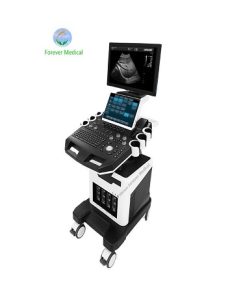What you need to know about ultrasonography?
- Abdominal ultrasonography:
Abdominal ultrasound is the most common, usually what we call liver, gallbladder, pancreas, and spleen examinations. Applicable to: Abdominal screening for abdominal pain, bloating, abdominal discomfort, etc., and inspections for certain organ diseases.
Requirements: Fasting for more than 8 hours. Fasting means not eating or drinking anything. I often encounter patients who say that they have not eaten, and if they ask again, they will tell you that they drank some milk or a bowl of soy milk, which is not acceptable. (Of course, if you need to take medicine, you can drink a little water).
- Urinary tract ultrasonography:
Ultrasound of the urinary system includes examination of the kidneys, ureters, bladder, and prostate in males. It is mainly suitable for the screening of tumors, stones, abnormal development of the urinary system, and abnormal urine routine findings.
Requirements: Simple kidney examination does not need to be prepared. The bladder, ureter, and prostate need to be filled. You can drink 1000 to 1500 ml of water (or various beverages) 1 to 2 hours before the examination, and hold back the urine after drinking the water. It is difficult to quantify the degree of holding back the urine. It feels the best.
- Ultrasound examination in obstetrics and gynecology
Gynecological ultrasound includes: examination of the uterus, bilateral ovaries, and adnexal areas. It is mainly applicable to: gynecological tumors, dysplasia, inflammation, early pregnancy (intrauterine and extrauterine) and related general screening for women of childbearing age.
Gynecological ultrasound is now commonly used in two ways: transabdominal ultrasound and transvaginal ultrasound.
Transabdominal ultrasound requirements: fill the bladder. Most people have to hold back until they can’t hold it anymore. Ultrasound doctors often ask: can we hold on for a while longer? If you can, please continue to persevere to obtain the best inspection results.
Transvaginal ultrasound requires: Empty bladder. It is necessary to urinate as much as possible before the test. That’s right, it’s just the opposite of a transabdominal ultrasound.
In special cases, the above two methods may be combined for scanning. At this time, our ultrasound doctor will tell you what to do.
Obstetric ultrasonography: It is mainly used to monitor the growth and development of the fetus in each period and to screen for fetal malformations.
Requirements: No special preparation is required for obstetrical examinations for more than 3 months of pregnancy, but if placenta previa is suspected in the second and third trimesters of pregnancy, it is still necessary to drink water to fill the bladder before examination.
- Cardiovascular ultrasonography
Cardiovascular system includes: heart, great vessels and peripheral vessels. Echocardiography is mainly used to diagnose heart diseases by scanning the structure, function and hemodynamics of the heart. Vascular ultrasonography mainly diagnoses vascular diseases by scanning the vessel wall, lumen and hemodynamic conditions.
Inspection requirements: generally no special requirements.
- Small organ and superficial ultrasonography
Small organs include: thyroid gland, breast gland, parotid gland, submandibular gland, lymph nodes and other glands.
Superficial mainly refers to the mass that you can feel that is different from normal tissue. In layman’s terms, it means that you feel that there is something growing on your body surface.
There is also a special examination: andrological examination, including testis, epididymis, scrotum and penis.
Requirements: No special preparation is required for this type of examination.
- Emergency ultrasonography
Emergency examination is expensive in time and finding the main cause of pain, so emergency patients do not need to make preparations, but because of limited examination conditions, occasionally it may be different from your usual examination, such as missing small cysts, polyps, etc. understandable.


